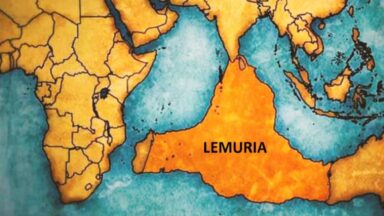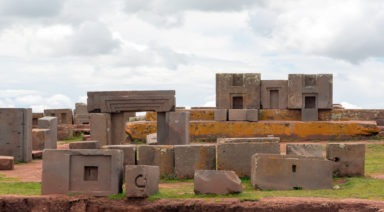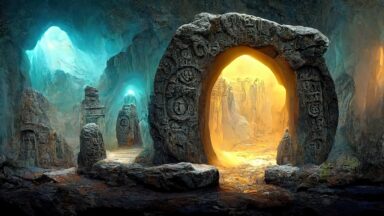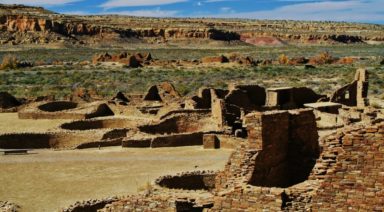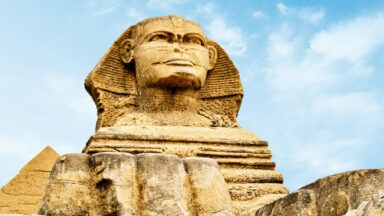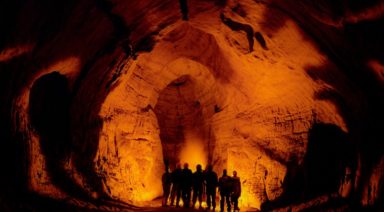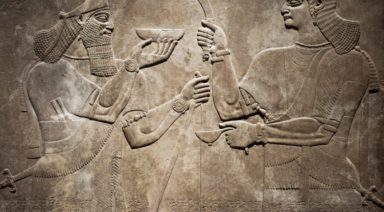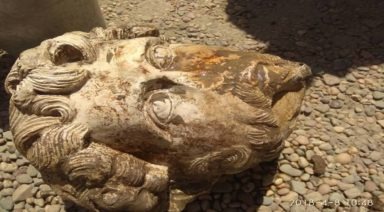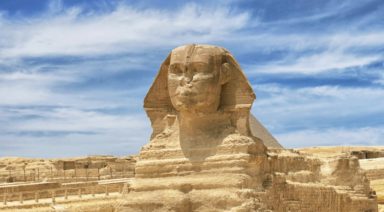Where Did Humans Originate, Earth or Outer Space?
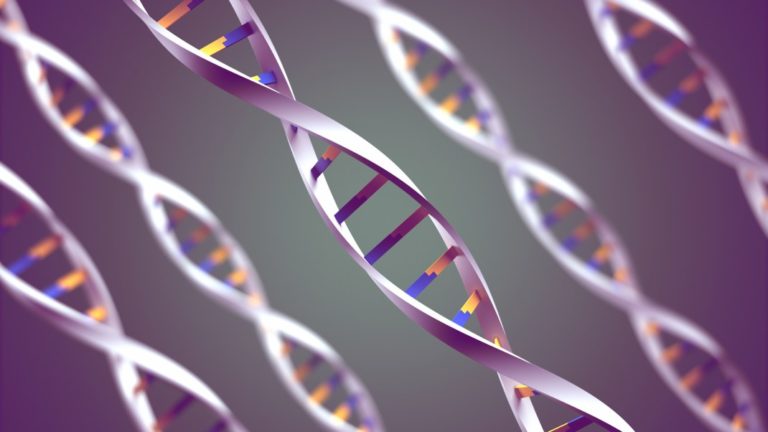
At over 4.5 billion years old and possibly much older, the Earth has been home to millions of unique and beautiful creatures. While it appears that modern humans are a relatively late entry into the marathon of blood-based, karmic rebirth cycles, there is a lot of speculation about when Homo sapiens emerged as the primary, two-legged leaders of Planet Earth. So where did humans come from?
“If then, said I, the question is put to me would I rather have a miserable ape for a grandfather or a man highly endowed by nature and possessed of great means of influence and yet who employs these faculties and that influence for the mere purpose of introducing ridicule into a grave scientific discussion, I unhesitatingly affirm my preference for the ape.”
— Thomas Henry Huxley
When and Where Did Humans First Appear on Earth?
According to recent findings, the original Hominids emerged (or arrived) on planet earth between 5 and 7 million years ago in Africa, when a handful of mature apes felt it was high time to begin walking upright.
As humans, we are members of the Hominidae, which includes great apes, gorillas, chimpanzees, and human beings. A Hominine is a member of the tribe Homininae, which includes gorillas, chimps, and humans. A Hominin is specific to the family Hominini, which excludes all the other Hominidae, except chimps and humans. Our ancient Hominid cousins, who evolved into Homo from the genus Australopithecus, may have appeared as late as 2-3 million years ago.
It wasn’t until around 200,000 years ago that modern humans took a cue from Homo Erectus, the “upright man,” and became the dominant Hominid species here on Earth. While their journeys began in Africa, these Hominins quickly moved toward Asia, Europe, Scandinavia, and eventually, the rest of the world.
Watch the full episode of Erich von Daniken’s Aliens of the Old Testament
What Did Modern Humans Evolve From?
According to Darwinian evolution, humans evolved through a long process that began with their ancient ancestors, the earliest primates. Most scientists believe that the genus Homo eventually extended itself to its offspring known as Homo sapiens, distinct from the great apes. This means that at one point, two unique ancestral lineages emerged, most likely from one genus, and initially, from one species.
How did this come to be? According to widely accepted beliefs, human beings and their language gradually evolved. With interbreeding among all the Hominins, trees of bipedal-beings emerged. Keep in mind that while all Hominins (modern humans) are Hominids, very few Hominids are Hominins.
Some of today’s religious fanatics believe that the Earth is much younger than 4.5 billion years and that no terrestrial (Earth-resident) rocks have been proven to be any older than a few hundred thousand years if that. All estimates, for man and planet, they say, stem from approximation, which is neither precise nor relevant. On a side note: while it appears Homo sapiens have come a long way, human consciousness and awareness are still works-in-progress.
Modern humans are unique because we conquered four primary evolutionary hurdles:
- Terrestrial living (on the ground) versus trees
- Changing physical movement from quadrupedal to bipedal
- Developing a large brain (encephalization)
- Forming tribes, cultures, and civilizations.
With all these abilities in tow, Home sapiens were able to claim their right to be masters over the dominion of Earth.
Did Humans Come From Other Planets?
Panspermia
This unique theory states that comets, rocks, meteorites, and other heavenly bodies, all speeding through space, transported bacteria and other DNA to Earth, and throughout all the galaxies and Universes throughout spacetime. Some say Mars is the likely location of Earth’s first infusion of life from other planets.
Alien Engineering
Long ago, possibly during the prehistoric eras, alien visitors traveled to Earth and educated a variety of our cultures on science, biology, infrastructure, and leadership to kickstart life for humanoids.
Some suggest these aliens are the same beings who became the mythic figureheads of a variety of our most popular religions.
Starseed Experiment
Many believe that humans came from other planets and Universes, and continue to do so, thereby seeding our planet with unique DNA from a variety of interplanetary species. Consider these possible types of alien visitors: Sirian, Pleiadian, Arturian, Andromedan, Starseed, Indigo, Crystal, Rainbow, Lightworker, Orion, Maldek, Lemurian, Atlantean, Avian, Reptilian, and others. Each of these has a unique origin and a variety of unique characteristics.
Miller-Urey Experiment
Since electric-sparks can turn water, methane, ammonia, and hydrogen into amino acids and sugars, it might be possible that life on Earth was initiated by bolts of lightning. Where this theory becomes otherworldly is when you consider that this may have been the first tactic used by living-beings from other worlds to bring life to Earth.
Deep-Sea Vents
It’s possible that deep-sea vents may have spewed enough hydrogen-rich molecules and mineral-catalysts to stimulate critical, pre-life reactions. Alien species may have had the forethought to utilize these vents to birth new life-forms from a distance.
Buried Under Ice-Caps
Some alien theorists believe that life on Earth began when several extraterrestrial alliances secretly deposited their offspring and other experiments in the deep waters under the Arctic and Antarctic caps. Since ice may have covered Earth’s oceans 3 billion years ago, aliens may have been living here for a long time.
Consciousness Transmutation
As other planets and galaxies began to intuit Earth’s potential, they utilized ancient techniques that allowed them to convert their forms of consciousness into forms that had the highest potential to inspire the birth of new living-beings here on Earth. Upon soul-travel to Earth, these conscious forms/souls merged with our soil, water, and air, and gave birth to new life forms – all through soul-intention.
Pre-19th Century Theories
Darwin’s theory
Charles Darwin and a handful of other naturalists and scientists postulated that, over time, the strongest and most aggressive species are the ones that tend to survive. As each generation of a species develops, it creates variations and enhancements that increase its ability to thrive, compete, defend itself, claim territory, and eventually reproduce. Darwin’s belief that organisms change over time as a result of inherited traits and behaviors has been a foundational belief system for over 100 years.
Thomas Henry Huxley
Thomas is a British biologist who became Charles Darwin’s (and natural selection’s) most ardent fan and defender. While he clearly adored Darwin, Huxley was also his own man. He did not believe in Darwin’s slow, gradual evolutionary process. Instead, he proposed that an evolving genus, species, or lineage could make miraculous and aggressive jumps within a generation.
Huxley was also one of the first scientists to discuss the evolution of Man, separate from animals, which was taboo at the time. He took this interest in man’s origin a step further and declared that the brains of apes and humans were fundamentally and anatomically the same. He was right. His children not only honored his legacy, but they also continued it.
Modern Theories
Aridity hypothesis, also known as the Savannah hypothesis
This unique and valid theory, which has developed over the past ten years, points to the unusual geology and climate of East Africa as being the driver of evolution. With alternating periods of dryness and hyper-humidity, Hominids appear to have had no choice but to evolve. As they endured and improvised around the drastic changes and extremes of African climates, they developed traits that led to a new, more evolved species. When reviewing the jumps in Hominid development during this period, all evidence appears to support the Aridity hypothesis.
Was Lucy the First Human?

Discovered in 1974 in Ethiopia, by paleontologist Donald C. Johanson, Lucy is our most famous, ancient human cousin.
This 3.2-million-year-old ape was the first Homo skeleton ever found. Her lineage appears to be that of Australophithecus afarensis, the direct ancestor of modern man.
While Lucy is the most famous Hominid, her cousin “Ardi” (Ardipithecus ramidus), at 4.4-million-years-old, became the oldest when he was discovered in 1992. Ardi neither resembles a human or a chimpanzee, yet he is an ancestor to both. Ardi’s skeleton represents the oldest and most complete study of Hominids to date.
While Ardi and Lucy were celebrating, another Hominid, Sahelanthropus tchadensis, was discovered in Chad in 2002. At 7 million-years-old, Sahe now holds the crown as the oldest of the early Hominid species, all of which appear to represent one genus.
If our planet was terraformed and then injected with alien DNA as an ambitious experiment, it might be hard to prove. Given all the holes in each of the above theories, all of them may be at least partially true. One thing is certain; the Earth is regenerative.
Given how complex and sometimes fragile the Earth is, it’s quite remarkable that it continues to renew and restore itself. Its many species, cells, and ecosystems seem to be both flexible and durable. Even humans and our ancient ancestors were successful at regrouping, regenerating, adapting, and reemerging in new and inspiring forms. One thing is sure: planets, creatures, and bacteria will always find a way to survive.
The History of Lemuria: Discover the Lost Continent
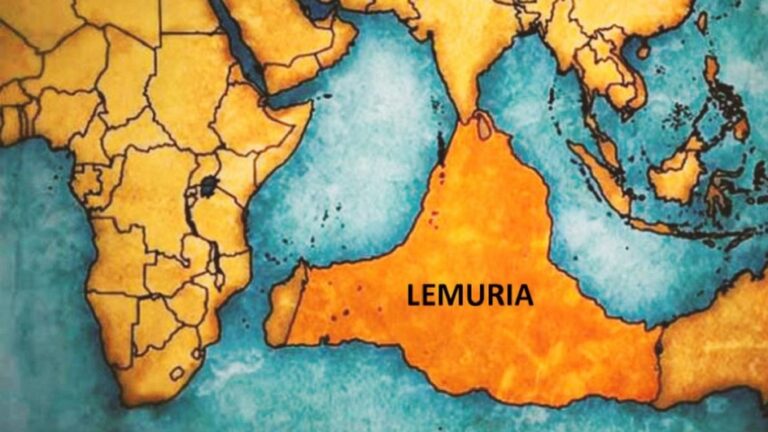
Lemuria was a vast continent that existed in the Pacific Ocean, inhabited by an advanced and spiritually developed civilization. It significantly influenced human evolution and left a legacy that endures to this day. In this article, we explore what Lemuria was, its origins, evolution, and impact on human history.
Table of Contents
- What Was Lemuria?
- Origins and Evolution of Lemuria
- Life in Lemuria
- Lemurian Technology and Knowledge
- The Relationship Between Lemuria and Atlantis
- The Fall of Lemuria
- The Legacy of Lemuria
What Was Lemuria?
Lemuria was a continent located in the Pacific Ocean, home to one of the earliest advanced civilizations on Earth. The Lemurians were highly spiritual beings who lived in perfect harmony with their surroundings. Their civilization was known for its profound knowledge of energy and its ability to manipulate it for the well-being and evolution of their society.
The Lemurian civilization thrived for thousands of years, developing advanced technologies that allowed them to build great cities and temples dedicated to meditation and spiritual connection. Lemuria was also a center of knowledge and wisdom, where various spiritual and scientific disciplines were taught and practiced. The Lemurians were known for their telepathic communication abilities and their capacity to access higher dimensions of existence, which enabled them to reach high levels of evolution and consciousness.
In the series Initiation, available on Gaia, Matías De Stéfano delves deeply into how this ancient civilization influenced human evolution and its connection with other advanced civilizations, such as Atlantis.
Origins and Evolution of Lemuria
The history of Lemuria begins approximately 200,000 years ago when the Alithir, an advanced race, arrived on Earth to raise the planet’s vibration and encode the water. These highly evolved beings chose the continent of Lemuria as their home, establishing a civilization that would become a beacon of light and knowledge for the world.
The evolution of Lemuria was marked by a deep respect for nature and an advanced understanding of cosmic energies. The Lemurians developed technologies that allowed them to harness the energy of natural elements, using resonance and vibration to create sustainable structures and systems. Their ability to work in harmony with nature enabled them to thrive for thousands of years, maintaining a perfect balance between technological development and spirituality.
As Lemuria grew and evolved, it became a center of cultural and spiritual exchange. The Lemurians established relationships with other advanced civilizations of the time, sharing knowledge and technologies that would benefit humanity as a whole. This intercontinental cooperation allowed Lemuria to expand its influence and leave a lasting legacy in Earth’s history.
Life in Lemuria
Life in Lemuria was deeply integrated with nature and cosmic energies. The Lemurians lived in harmony with their surroundings, practicing an advanced spirituality that permeated every aspect of their existence. Their society was based on cooperation, peace, and balance, creating a rich culture of spiritual knowledge and practices.
- Peaceful society: The Lemurian society was characterized by its focus on peace and cooperation. There were no wars or conflicts, as everyone worked together for the common good.
- Natural homes: Lemurian homes were built with natural materials and energetically aligned with the environment. These sustainable structures provided comfort and harmony with nature.
- Spiritual education: From an early age, Lemurians received an education focused on spiritual development and connection with the universe. This allowed them to grow with a deep understanding of their place in the cosmos.
- Telepathic communication: The Lemurians had telepathic abilities, facilitating effective and profound communication among themselves. This eliminated misunderstandings and promoted greater social unity.
- Holistic health: Medicine in Lemuria was holistic, combining spiritual and scientific knowledge. They used energy and medicinal plants to heal and maintain well-being.
- Community rituals: Ceremonies and rituals were an essential part of Lemurian life, strengthening social cohesion and connection with cosmic energies. These events included collective meditations and celebrations of natural cycles.
- Relationship with nature: Daily life was synchronized with natural cycles, respecting and honoring the Earth and all its beings. This respectful relationship ensured the sustainability and abundance of resources.
Lemurian Technology and Knowledge
The Lemurian civilization was known for its advanced technology and profound understanding of natural energies. The Lemurians developed various technologies that allowed them to live in harmony with nature and harness cosmic energies for their benefit.
- Crystal energy: The Lemurians used crystals to store and channel energy. These crystals were essential in their healing and communication technologies.
- Resonance technology: They used resonance and vibration for construction and healing. This technology allowed them to create structures and regenerate tissues using specific frequencies.
- Solar energy utilization: Solar technology was highly advanced in Lemuria. They used devices to capture and store solar energy, providing a sustainable energy source.
- Coded water systems: The Lemurians encoded water with specific energies for healing and growth. This knowledge improved the health and vitality of their crops and themselves.
- Light ships: They developed ships capable of traveling through dimensions using light and cosmic energy. These ships facilitated contact with other advanced civilizations.
- Sacred geometry knowledge: Sacred geometry was used in all their constructions and technologies. Geometric patterns ensured energetic alignment and resource efficiency.
- Planetary energy networks: They created a network of connected energy points that facilitated energy transfer and long-distance communication. This network maintained balance and harmony throughout Lemuria.
The Relationship Between Lemuria and Atlantis
Lemuria and Atlantis were two advanced civilizations that existed during different periods, though there was a time when they coexisted and maintained contact. Both civilizations shared knowledge and technologies, establishing a relationship of cultural and spiritual exchange. The Lemurians and Atlanteans collaborated on several projects, mutually benefiting from each other’s discoveries and advancements.
The relationship between Lemuria and Atlantis was based on cooperation and mutual respect. The Atlanteans, who emerged after the Lemurians, adopted many of the spiritual and technological practices developed in Lemuria. This exchange allowed both civilizations to reach high levels of evolution and consciousness, significantly influencing the progress of humanity.
However, as both civilizations grew, differences in their approaches and philosophies began to emerge. While the Lemurians focused more on spirituality and harmony with nature, the Atlanteans began to develop technologies aimed at control. These differences eventually led to tensions and conflicts that contributed to the fall of both civilizations.
The Fall of Lemuria
The fall of Lemuria was a cataclysmic event that marked the end of a golden age of wisdom and peace. According to various esoteric traditions, Lemuria was destroyed by a series of natural disasters, including earthquakes and volcanic eruptions, that submerged much of the continent into the Pacific Ocean. This event was seen as a necessary energetic rebalancing of the Earth.
Before their fall, the Lemurians knew their time was coming to an end. Many of them migrated to other parts of the world, carrying with them their knowledge and traditions. These survivors established new communities in regions such as Asia, the Americas, and Africa, where they influenced the development of local civilizations and planted the seeds of new spiritual cultures.
Despite the physical destruction of Lemuria, its legacy continued through the stories and teachings passed down by the survivors. These stories became the foundation of many mythologies and belief systems around the world, keeping the memory of Lemuria alive and preserving its contribution to the spiritual evolution of humanity.
The Legacy of Lemuria
The legacy of Lemuria is evident in various spiritual and cultural traditions around the world. The knowledge and practices of the Lemurians were integrated into the cultures of Asia, the Americas, and Africa, influencing their belief systems, ceremonies, and social structures. This legacy can be seen in the similarities between the mythologies and spiritual practices of these regions.
The Lemurian teachings on connecting with nature and utilizing cosmic energies have endured through the centuries. These teachings are reflected in practices such as meditation, the use of crystals for healing, and the application of sacred geometry principles in architecture. The influence of Lemuria is especially notable in indigenous wisdom and shamanic traditions.
Today, many seekers and spiritual communities continue to explore and honor the legacy of Lemuria. Through study and spiritual practices, they strive to revive ancient knowledge and apply it to the modern world. This renewed interest in Lemuria highlights the ongoing relevance of its wisdom in the quest for balance and harmony with nature and the cosmos.




